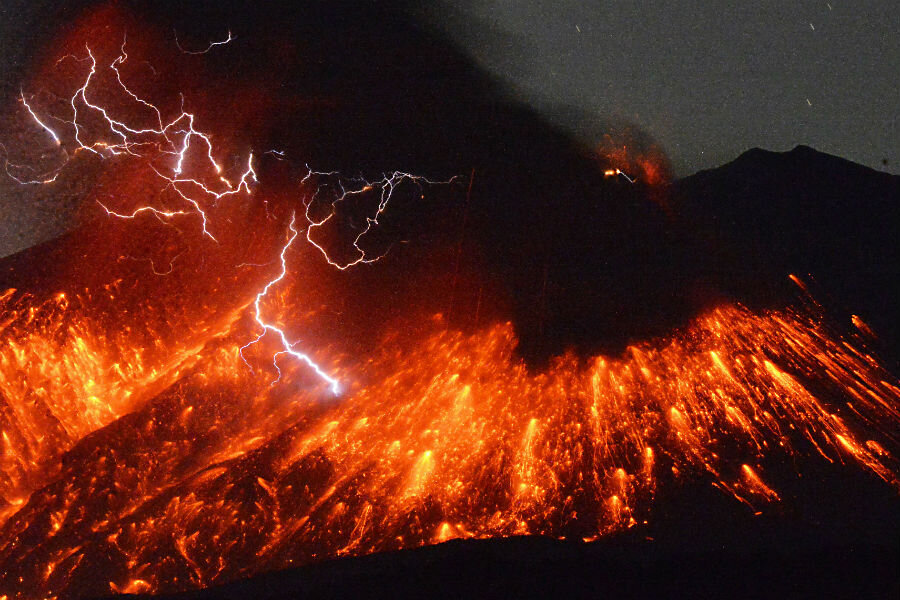Japanese volcano erupts in rare display of roiling lightning
Loading...
A Japanese volcano erupted Friday in a spectacular display of exploding lava. Dark clouds laced with lightning billowed out from the fiery mountain. Smoke and ash from the eruption shot about 1.2 miles into the sky.
The active volcano, Mount Sakurajima, is just over 30 miles from a nuclear plant on the southern island of Kyushu. No damage has been reported to the power station.
Although the volcano is not near any communities, the Japan Meteorological Agency has upgraded the volcanic alert to level 3, restricting people from entering the mountain's vicinity.
Sakurajima is a wildly active volcano, with 700 explosive eruptions last year alone. More than 100 volcanoes dot the Japanese archipelago, which together account for 10 percent of all active volcanoes on the globe.
More than 170 of Sakurajima’s eruptions last year cast smoke at least 1.2 miles into the sky, according to Japan's state broadcaster NHK.
But this particular eruption held something special in its vivid display of volcanic lightning.
The Guardian's David Adam once described volcanic lightning as "the most vivid demonstration of power, beauty and mystery the natural world has to offer."
Stretching back centuries, there are only about 200 recorded instances of this phenomenon.
One of the most studied eruptions of all time, the 1980 eruption of Mount St. Helens in Washington state, pumped out an average of one bolt of lightning every second.
"Several people witnessed long lasting shows of sheet lightning which was accompanied by volkswagen sized St. Elmo's fire bouncing and rolling on the ground nearly 25 miles from the volcano," L. Weirup of Oregon State University wrote. St. Elmo's fire appears as a massive electrical flash, less defined than bolts of lightning, and looking more like a flame.
Japan sits upon "The Ring of Fire," the most seismically active region on Earth, which stretches in an arc around the Pacific Ocean, beginning in Chile, climbing up the western coast of the United States, curving back down through Japan and Indonesia, and winding up in New Zealand.
About 90 percent of all the world's earthquakes, and 75 percent of the volcanic eruptions, occur in this zone, according to National Geographic.
Japan has a huge proportion of the volcanoes dotting this arc, claiming 110 of the total 452.
Indeed, the country’s terrain is considered 71 percent mountainous, meaning that its folklore is bathed in references to these majestic peaks.
Mount Fuji, one of the world's most well-known mountains, is also one of the nation's myriad volcanoes, though its last eruption was in 1707. It has long held a prominent position in Japanese hearts, representing something sacred, particularly prior to the Meiji Restoration in 1868.
As described in Myths and Legends of Japan, "Fuji dominates life by its silent beauty: sorrow is hushed, longing quieted, peace seems to flow down from that changeless home of peace, the peak of the white lotus."







